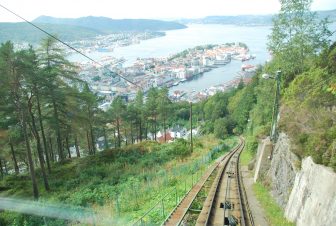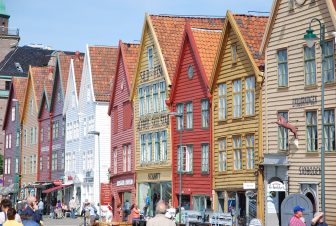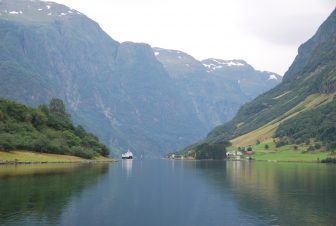
There are 5 museums in Bygdøy, the peninsula in the west of the centre of Oslo city in Norway.
We went to one of them, the Norwegian Museum of Cultural History.
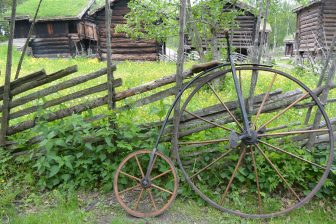
It is an open air museum, exhibiting the old traditional houses which were brought from all over Norway and reconstructed here.
We went in there for free, as we used our Oslo Pass, but if you pay there, the entrance fee was 160 krone (£14.80, €16.50, $18.40).
We showed our passes and received the tickets.
There are many museums like this one all over the world, for example, we went to the one in Lviv in Ukraine last year and the one in Chiba in Japan, too.
The reason why we went to this museum was to see the wooden church called Gol Stave Church.
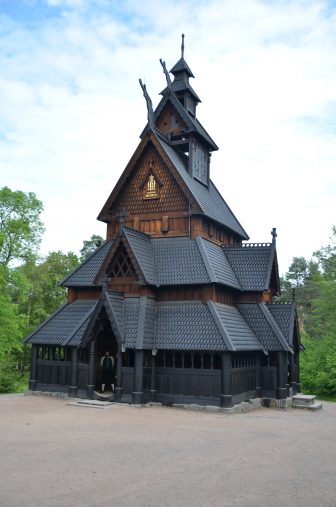
I do not why but I am always attracted to wooden churches.
I was very impressed by the churches in Maramures in Romania long time ago and admired the Transfiguration Church on Kizhi Island in Russia two years ago.
I have heard that there are quite a few wooden churches in Norway and always wanted to see one.
But the actual working churches are all located far in the countryside and are difficult to visit, so I thought the one in the museum is good enough.
This Gol Stave Church was standing magnificently on the hill in the museum site.
It is gorgeous, with layers of black roofs.
There was a member of staff wearing a folk costume there and when I asked, he told me that the reason why the roofs and some of the walls are black is that they were tarred so that no water soaked into the church.
The interior was very simple and the place with the painted saints was the altar.
There was an information board standing nearby and according to that, this church was built in the 13th century in Gol in Hallingdal, which is about 45 km south west of Oslo.
They moved it to Bygdøy in 1884 and one third of the materials were medieval.
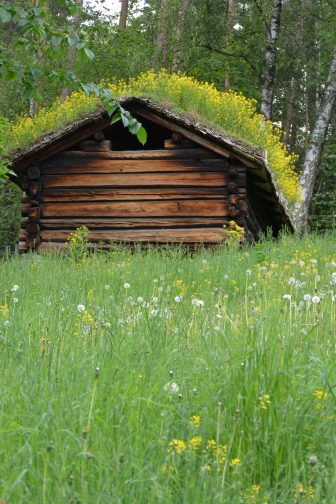
The reason they moved here in 1884 when no museum had been built yet was because Oscar II, who was the King of Norway as well as the King of Sweden at that time, was collecting old buildings for himself in the public park in Bygdøy.
There were 4 other buildings on top of this church in the park in those days and it is supposed to be the first open air museum in the world, the information board says.
I had thought that the first open air museum was Skansen in Sweden (1891), but this one is certainly older.
There were many other old wooden houses in the museum of course.
They were mainly farm houses but there were some schools, too.
Some had plants on top of their roofs.
Some museum staff wearing costumes were demonstrating baking bread and other things, which was fun to look at.
They were planning to show the traditional dance in the afternoon, but unfortunately we could not see it as we had another plan for the day.
[ May 2019 ]

